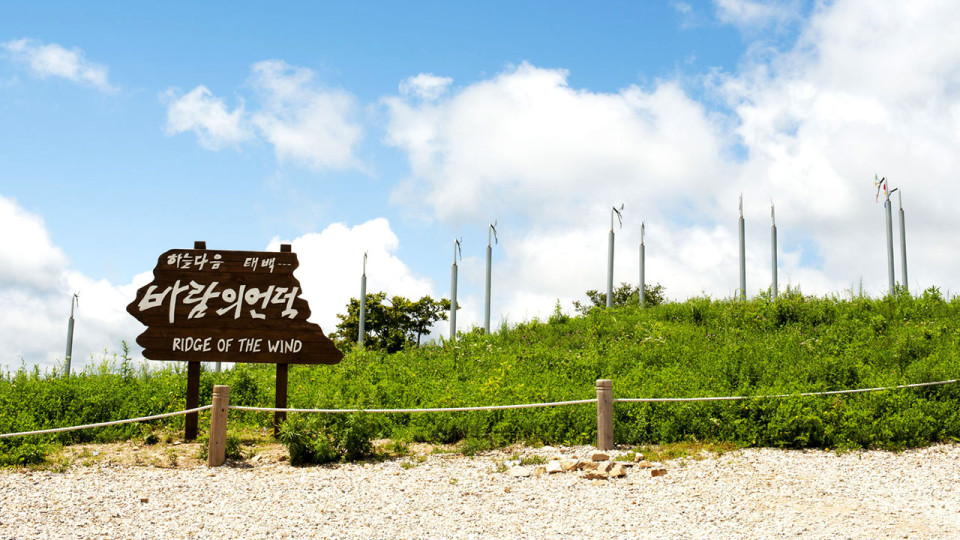South Korea may not be considered a typical destination for travelling runners to explore new trails, but there’s definitely much to be said for their unique, challenging trails for runners of all proficiency levels. The topography of South Korea gives it a natural advantage for runners – according to CNN, approximately 70% of the South Korean landscape is comprised of mountains – but there are other, less challenging trails for runners who may not appreciate elevated altitudes as well.
Let’s take a look at some of the best trails for runners looking to travel to South Korea.
1. Namsan Park
Namsan is also known as South Mountain Park. Located right in the heart of the capital city of Seoul, Namsan has plenty of 10 km paved paths to run upon for the beginner runner. For a more advanced runner who wants a more advanced challenge, consider Namsan’s 2 km climb to the Seoul Tower (the last 200 metres are a true test of runner’s mettle) located at the park’s southwest corner.
Location: Jung-gu district of south central Seoul
Distances: Approx. 860 metres in total
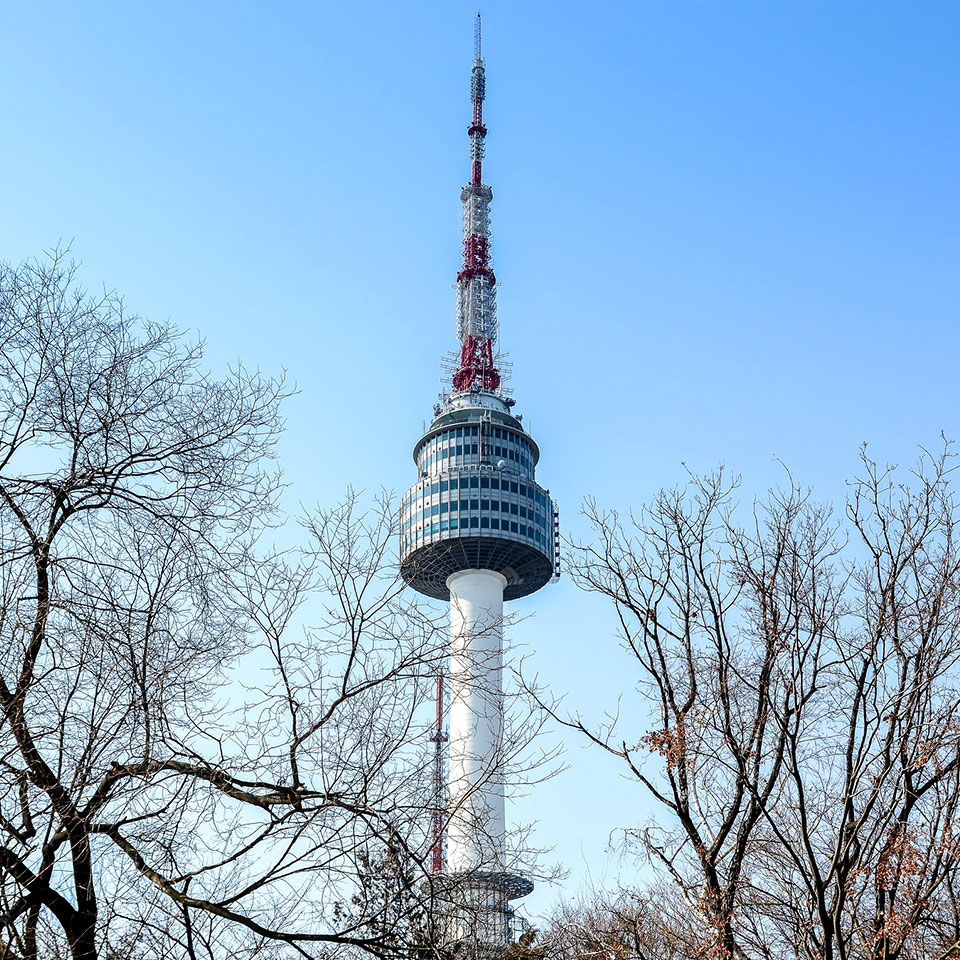
2. Riverside Park
After you’re done with the Herculean task of climbing the highest peak of Namsan, walk 6.5 km to the south to Riverside Park. You’ll find yourself enchanted by the Han-Gang (the Han River), which runs to the south bank of the park. The park is actually the course of the Seoul Marathon, at 21.1 km each way (forward and back). Many Seoul running clubs take to this path for their run, and they’re very welcoming to outsiders if you’re looking for a club to temporarily join during your visit.
Location: Between the Banpo and Hannam bridges on the river’s south bank
Distances: Approx. 41.8 km in total
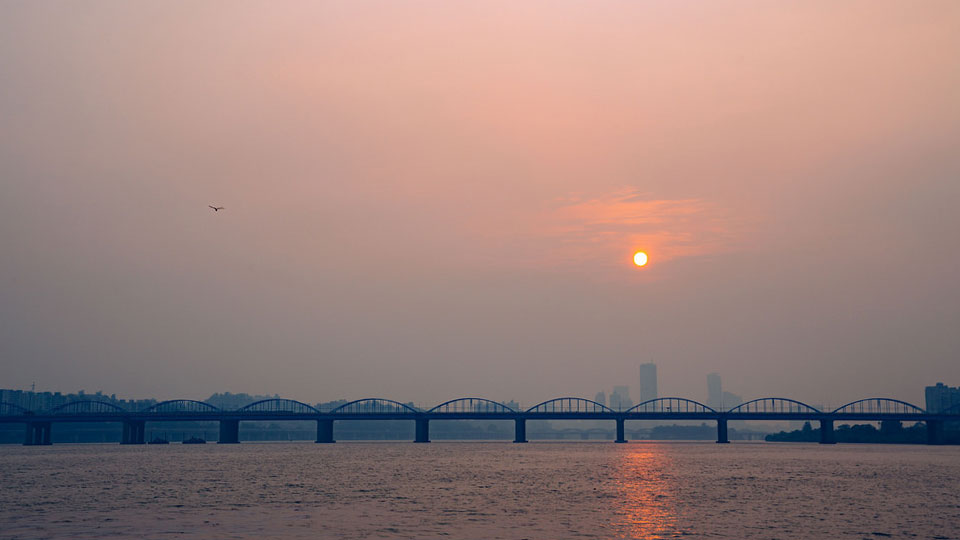
3. Seoraksan
Now this is one of the more beautiful trails in the whole of Korea. It’s the home to Daecheongbong, which –at over 1700 metres high – is the park’s highest peak. Depending on when and where you start, you can finish your trek in as little as three hours. Both the top and the bottom of this park are absolutely beautiful – the top of the park is Ulsan Bawi (876 metres), where you can see great views of the sea, as well as Daecheongbong. The bottom valley is full of lush colors in the autumn.
Location: East-central Korean peninsula
Distances: Approx. 160 square kilometres in total
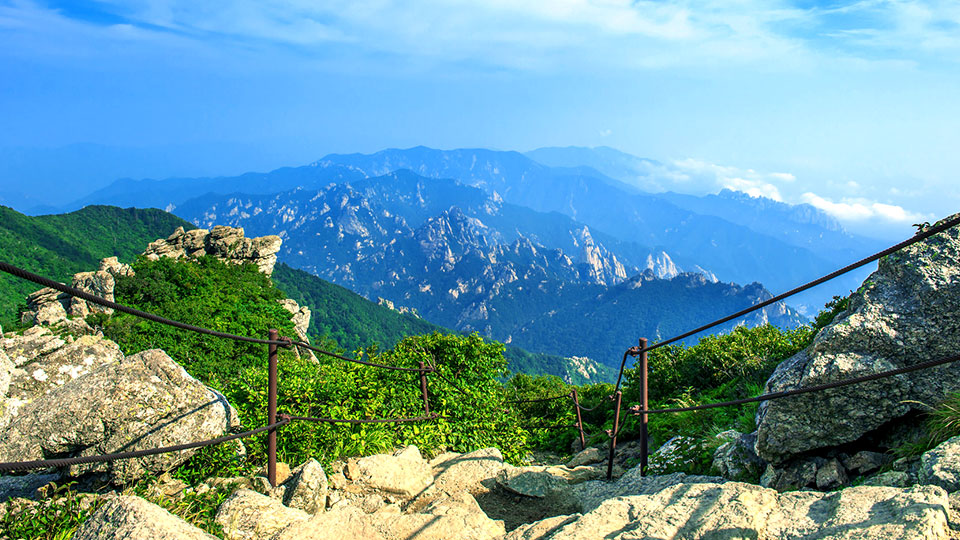
4. Pukhansan National Park
To the southwest of this national park lies Yonsei University, in Seoul’s northwest corridor. This park brings in a lot of expats, so if you’re inclined to find like-minded people who like to run the same way you do, take yourself here. For a more forested experience, check out the Dulle-gil Trail, which actually meanders through small villages for about 70 kilometres.
Location: Literally, it means “mountains north of the Han River”
Distances: Approx. 80 square metres in total
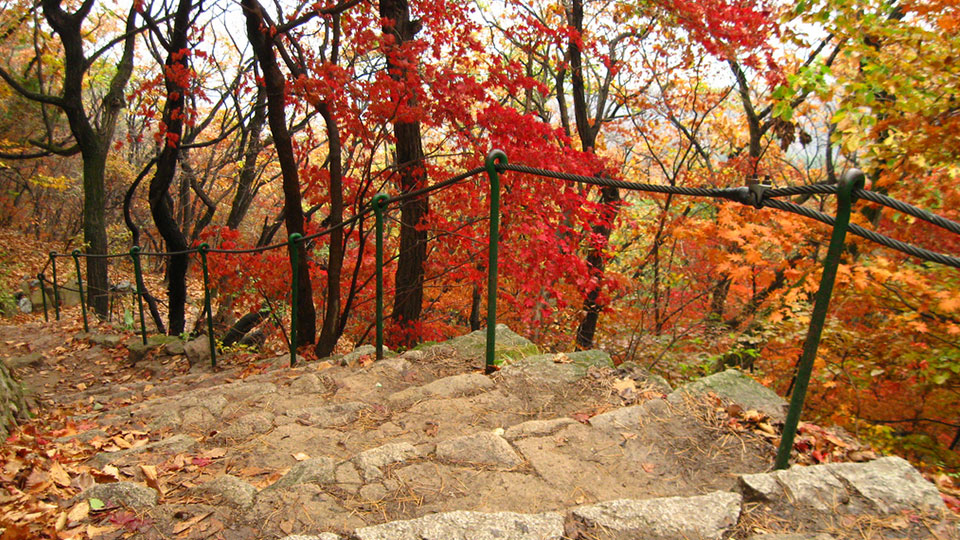
5. Bukhansan
Bukhansan is known as the “Lungs of Seoul” because of the shape of its highest peak. You begin at Bukhansanseong Hiking Support Center near Gupabal Station (subway line three), and you take about three hours to get up to Baegundae. From there, you will get a bird’s eye view of Seoul, which makes Bukhansan one of the most popular running tourism destinations.
Location: Gupabal Station (subway line three)
Distances: The highest peak is approx. 835 metres in total
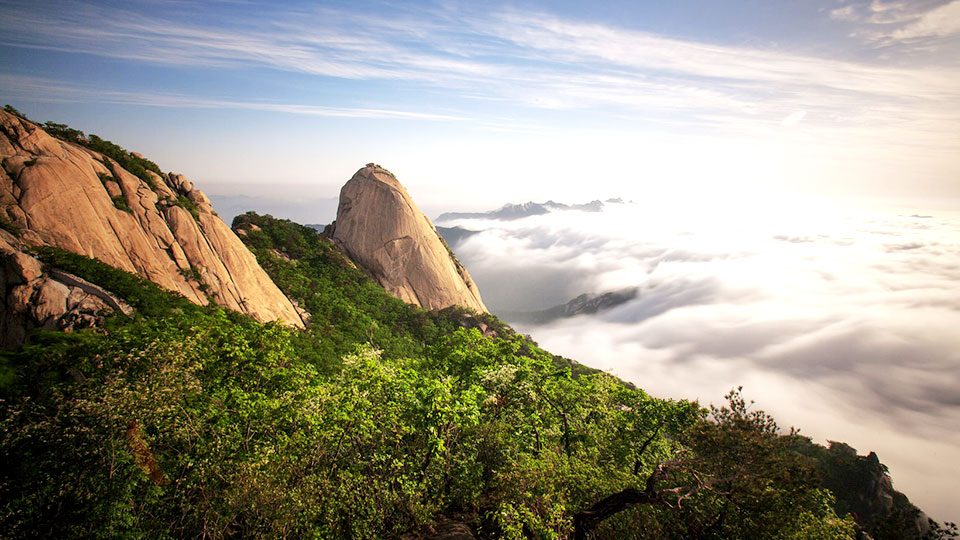
6. Olympic Park
This park was so named because it was the host to the 1998 Olympic games. This park is located in Seoul’s southwest corridor, and it’s worth visiting to see some of the Olympic statues. Many of the local 5K and 10K races start and end at Olympic Park, so if you’re a sprint runner, this is definitely a place you’ll want to visit. For a more lengthy run, take a 5.6 km trek around Mongchon Fortress and moat, World Peace Gate, the Olympic Museum and Cultural Center.
Location: Songpa-gu, Bangi-dong
Distances: Main trail is approx. 5.6 km in total
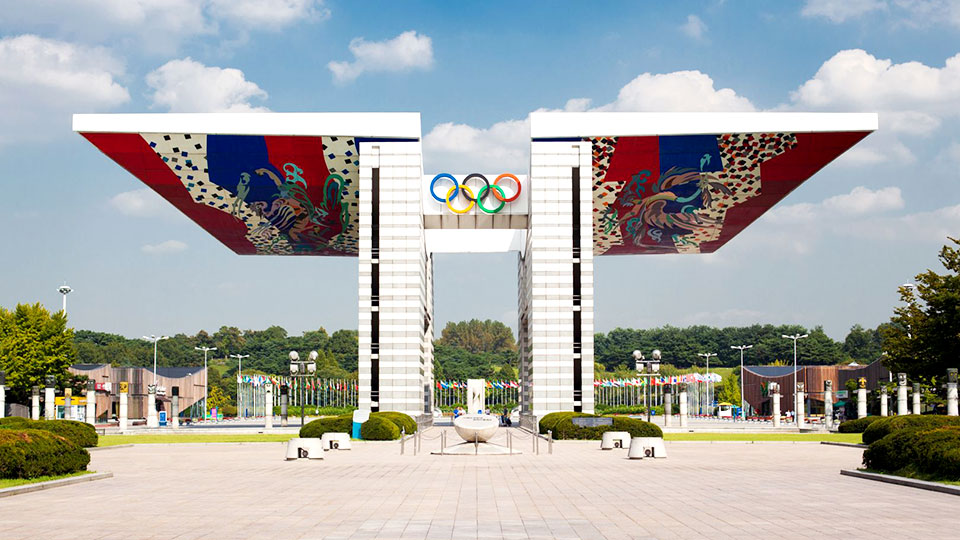
7. Taebaeksan
The top peak of this trail is where the Koreans of eons gone by would perform sacred rituals to their various gods, and it’s called Cheonjedan, or “the altar for heavenly rites”. This is the perfect place to go in the winter, because the high altitude combined with the snow leaves what the Koreans call “snow flowers”, and it will take your breath away (in case the high altitude doesn’t).
Location: Goes from the city of Taebaek in Yeongwol-gun County, Gangwon-do Province, to Bonghwa-gun County, Gyeongsangbuk-do Province
Distances: Top peak trail is approx. 1.6 kilometres in total
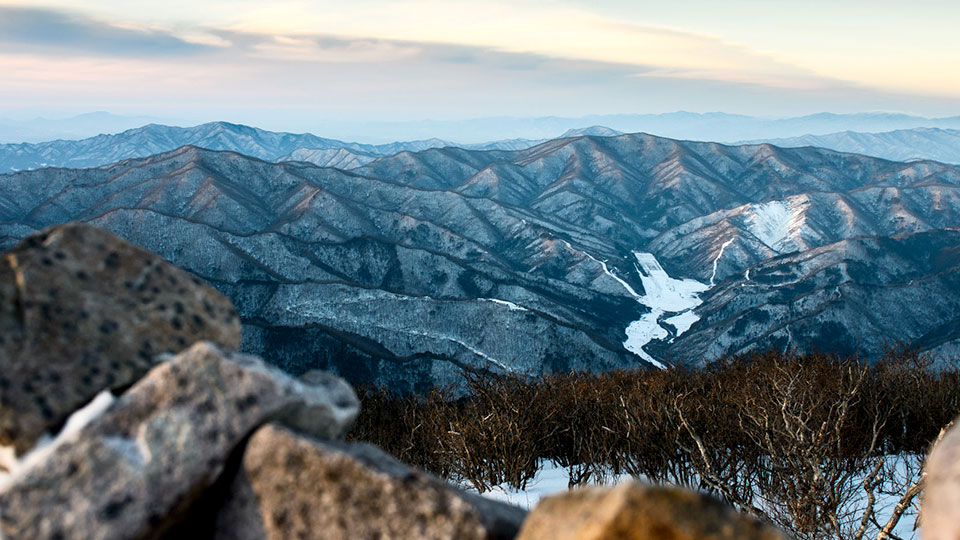
8. Songnisan
You already know that when a trail begins at a Buddhist temple, it’s going to be sublime. You start your running quest on the Songnisan at Shilla-era Buddhist temple Beopjusa, and run about 1,100 metres to Munjangdae, which is a cloud-covered subpeak of the trail. If you want to stay on in the area after the run, head back to Beopjusa for the Temple Stay programme.
Location: Sobaek mountains along the border between Gyeongsangbuk-do and Chungcheongbuk-do
Distances: Munjangdae is approx. 1,100 metres in total
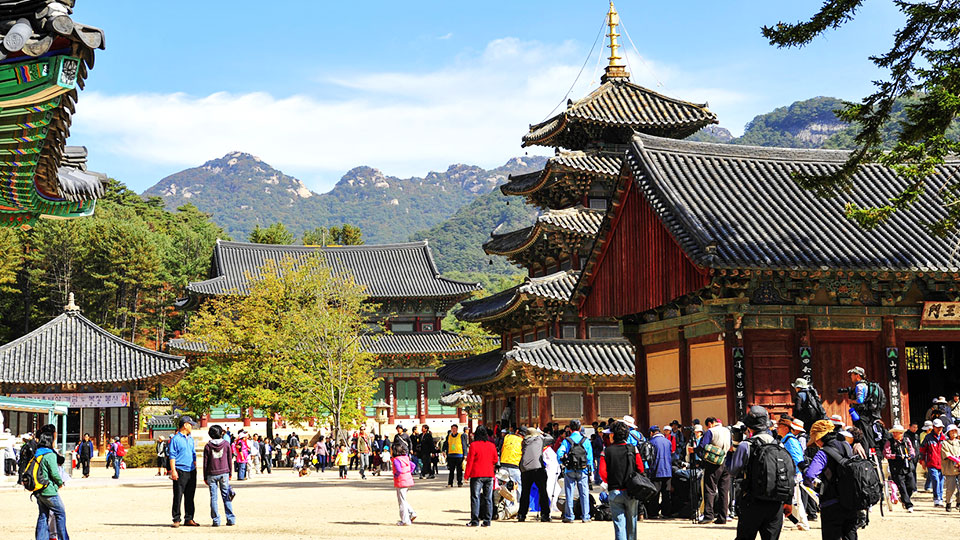
9. Jirisan
This is the oldest, and best known, mountain trail to run, and quite simply, it is HUGE. Begin your run at Yeongok Hiking Support Center, which is at the start of Korea’s largest national park, and for the next five hours, be prepared to be blown away by the views. Your total run will span the course of nearly 500 square kilometres, so make sure you have all your endurance packs at the ready!
Location: Spans three provinces (North, South Jeolla and South Gyeongsang)
Distances: Approx. 1,900 metres in total
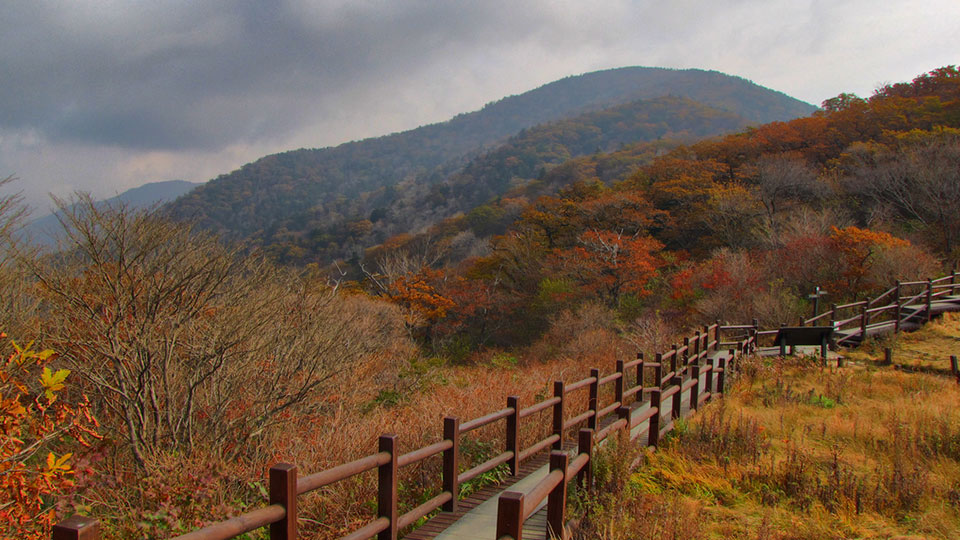
10. Naejangsan
Like most of Korea’s trails, this is a visually attractive trail that begins at the Hiking Information Center, winds through to Buddhist temple Naejangsa, and ends at the top peak of Sinseonbong. This is located in the North Jeolla Province, so it’s a little further away than the other trails…but the trip is worth it.
Location: On the border of North Jeolla and South Jeolla provinces in southwestern South Korea, approximately three hours drive south of Seoul
Distances: Approx. 760 metres in total
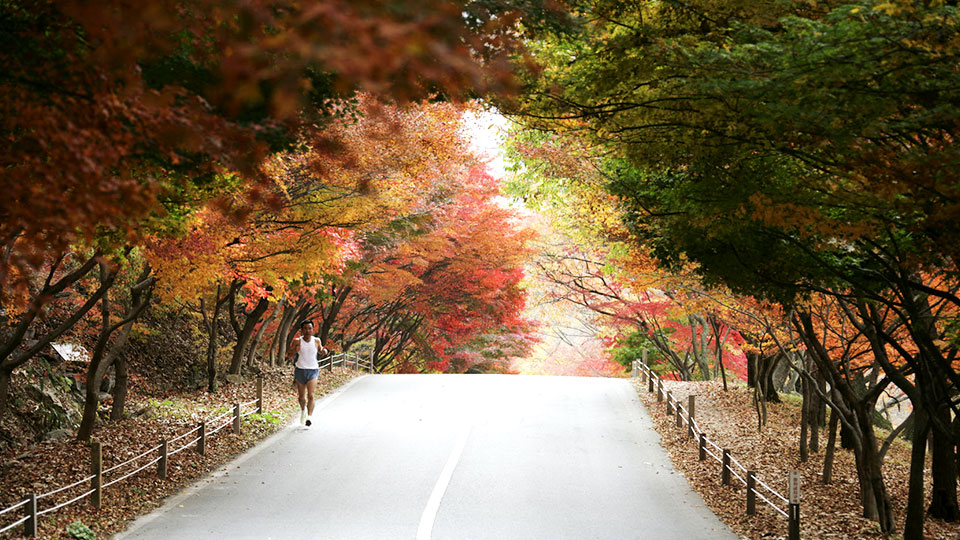
Conclusion
As you can see, South Korea is far from short on trails to run. Beside running trails, South Korea offers plenty of top quality marathons and running events. Once you are in the country, why not stay for a while to explore the unique culture and visit other beautiful places too.
What are some of your favourite trails to run in South Korea? Did you join an overseas running club? We’d love to hear from you, so leave your thoughts in the comments below!



